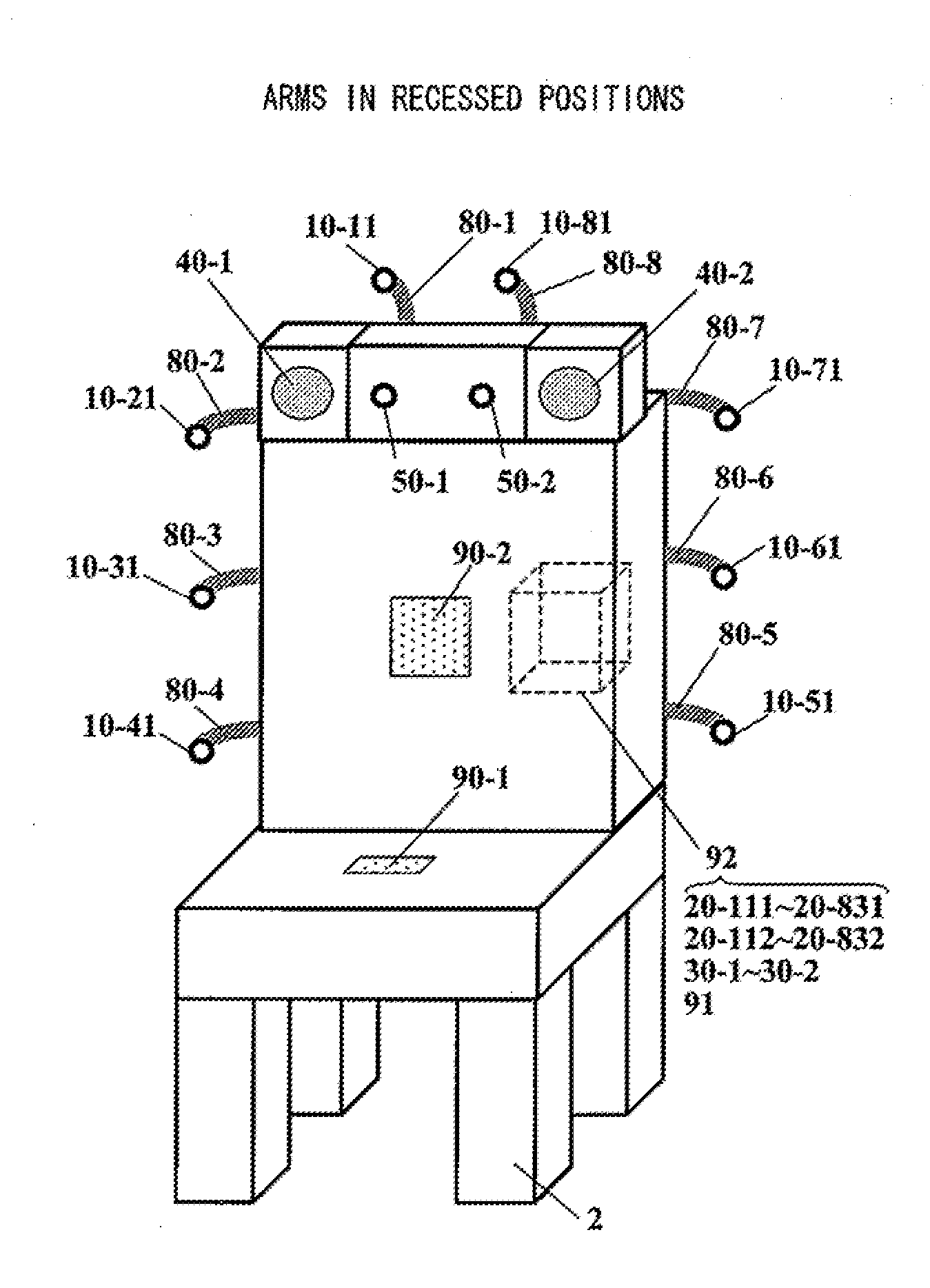Noise control device
a noise control and noise technology, applied in the field of noise control devices, can solve the problems of large amount of calculation, inability to obtain noise reduction effect, difficult to predict a change in noise in advance, etc., and achieve the effect of reducing an unspecified number of noises arriving
- Summary
- Abstract
- Description
- Claims
- Application Information
AI Technical Summary
Benefits of technology
Problems solved by technology
Method used
Image
Examples
first embodiment
[0084]Described below with reference to FIGS. 7 and 8 is a structure of a noise control device according to a first embodiment of the present invention. FIG. 7 shows a circuit structure of the noise control device according to the first embodiment. FIG. 8 shows that noise microphones are placed in the placement pattern P1. It is assumed in FIG. 8 that an unspecified number of noises N are present outside a space which is formed by the noise microphones and which has an approximately circular cylindrical shape.
[0085]In FIG. 7, the noise control device is structured with noise microphones 10-1 to 10-n, adaptive filters 20-1 to 20-n, an adder 30, a control speaker 40 and an error microphone 50. Here, n is an integer no less than 1. Also in FIG. 8, n=20.
[0086]The noise microphones 10-1 to 10-n are noise detectors each for detecting a plurality of noises. The noise microphones each detect the plurality of noises arriving thereat, and output the detected noises as a noise signal. The nois...
second embodiment
[0097]In the first embodiment, the noise microphones are placed in the placement pattern P1 shown in FIG. 1. Described below in the present embodiment is an exemplary placement pattern of the noise microphones, which is different from the placement pattern P1 and which allows an unspecified number of noises to be reduced.
[0098](Placement Pattern P2)
[0099]Hereinafter, a placement pattern P2 will be described with reference to FIGS. 12A and 12B. FIG. 12A shows a top view of the placement pattern P2, and FIG. 12B is a side view of the placement pattern P2. In the placement pattern P2, the noise microphones 10-1 to 10-20 are placed so as to surround the control speaker 40 and the error microphone 50, and so as to form a polyhedral-shaped space having an approximately spherical shape, which polyhedral-shaped space has the error microphone 50 at the center thereof. In other words, also in the placement pattern P2, the control speaker 40 and the error microphone 50 are placed within the po...
third embodiment
[0109]Hereinafter, a structure of the noise control device according to a third embodiment of the present invention will be described with reference to FIGS. 14 and 15. FIG. 14 shows a circuit structure of the noise control device according to the third embodiment. FIG. 15A shows a top view of the placement pattern P2, and FIG. 15B shows a side view of the placement pattern P2.
[0110]In FIG. 14, the noise control device comprises the noise microphones 10-1 to 10-n, adaptive filters 20-11 to 20-n1, adaptive filters 20-12 to 20-n2, adders 30-1 and 30-2, control speakers 40-1 and 40-2, and error microphones 50-1 and 50-2. Note that, n is an integer no less than 1. In FIGS. 15A and 15B, n=20.
[0111]The noise control device according to the present embodiment has a different circuit structure from that of FIG. 7 in that the noise control device according to the present embodiment has two adaptive filters for each noise microphone, and has two adders, two control speakers and two error micr...
PUM
 Login to View More
Login to View More Abstract
Description
Claims
Application Information
 Login to View More
Login to View More - R&D
- Intellectual Property
- Life Sciences
- Materials
- Tech Scout
- Unparalleled Data Quality
- Higher Quality Content
- 60% Fewer Hallucinations
Browse by: Latest US Patents, China's latest patents, Technical Efficacy Thesaurus, Application Domain, Technology Topic, Popular Technical Reports.
© 2025 PatSnap. All rights reserved.Legal|Privacy policy|Modern Slavery Act Transparency Statement|Sitemap|About US| Contact US: help@patsnap.com



